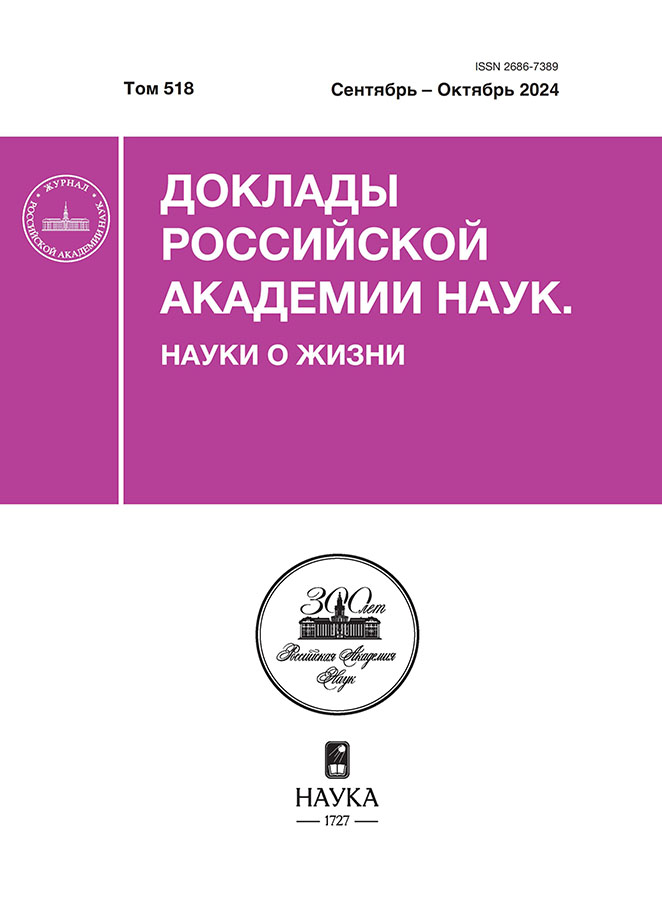Circadian Regulation of Expression of Carotenoid Metabolism Genes (PSY2, LCYE, CRTRB1, NCED1) in Leaves of Tomato Solanum lycopersicum L.
- Autores: Filyushin M.A.1, Shchennikova A.V.1, Kochieva E.Z.1
-
Afiliações:
- Institute of Bioengineering, Federal Research Center “Fundamentals of Biotechnology” of the Russian Academy of Sciences
- Edição: Volume 518, Nº 1 (2024)
- Páginas: 108-112
- Seção: Articles
- URL: https://cijournal.ru/2686-7389/article/view/651408
- DOI: https://doi.org/10.31857/S2686738924050191
- ID: 651408
Citar
Texto integral
Resumo
The circadian dynamics of the expression of key genes of carotenoid metabolism (PSY2, LCYE, CrtRB1, and NCED1) in the photosynthetic tissue of tomato Solanum lycopersicum L. (cultivar Korneevsky) plants was characterized. An in silico analysis of the gene expression pattern was carried out and a high level of their transcripts was detected in the leaf tissue. qRT-PCR analysis of gene expression was performed at six time points during the day and found the highest levels of PSY2, LCYE and NCED1 transcripts in the second half of the light phase, and CrtRB1 – at the end of the dark phase. The content and composition of carotenoids in leaf tissue in the middle of the day was determined and it was shown that the leaf accumulates 1.5 times more compounds of the ɛ/β-branch of carotenoid biosynthesis pathway than compounds of the β/β-branch.
Palavras-chave
Texto integral
Sobre autores
M. Filyushin
Institute of Bioengineering, Federal Research Center “Fundamentals of Biotechnology” of the Russian Academy of Sciences
Autor responsável pela correspondência
Email: michel7753@mail.ru
Rússia, Moscow
A. Shchennikova
Institute of Bioengineering, Federal Research Center “Fundamentals of Biotechnology” of the Russian Academy of Sciences
Email: michel7753@mail.ru
Rússia, Moscow
E. Kochieva
Institute of Bioengineering, Federal Research Center “Fundamentals of Biotechnology” of the Russian Academy of Sciences
Email: michel7753@mail.ru
Rússia, Moscow
Bibliografia
- Stra A., Almarwaey L.O., Alagoz Y., et al. // Front. Plant Sci. 2023. V. 13. 1072061.
- Stauder R., Welsch R., Camagna M., et al. // Front. Plant Sci. 2018. V. 9. 255.
- Li F., Vallabhaneni R., Yu J., Rocheford T., et al. // Plant Physiol. 2008. V. 147(3). P. 1334–1346.
- Ezquerro M., Burbano-Erazo E., Rodriguez-Concepcion M. // Plant Physiol. 2023. V. 193(3). P. 2021–2036.
- LaPorte M.F., Vachev M., Fenn M., et al. // G3 (Bethesda). 2022. V. 12(3). jkac006.
- Hu L., Feng S., Liang G., et al. // AMB Express. 2021. V. 11(1). 83.
- López-Ráez J.A., Kohlen W., Charnikhova T., et al. // New Phytol. 2010. V. 187. P. 343–354.
- Zhang M., Yuan B., Leng P. // J. Exp. Bot. 2009. V.60. P. 1579–1588.
- Kai W., Fu Y., Wang J., Liang B., et al. // Sci Rep. 2019. V. 9. 16943.
- Yang R., Yang T., Zhang H., et al. // Plant Physiol. Biochem. 2014. V. 77. P. 23–34.
- Yari Kamrani Y., Shomali A., Aliniaeifard S., et al. // Cells. 2022. V. 11(7). 1154.
- Li F., Vallabhaneni R., Yu J., Rocheford T., et al. // Plant Physiol. 2008. V. 147. P. 1334–1346.
- Sun T.H., Liu C.Q., Hui Y.Y., et al. // J. Integr. Plant Biol. 2010. V. 52. P. 868–878.
- Baek D., Kim W.Y., Cha J.Y., et al. // Plant Physiol. 2020. V. 184(1). P. 443–458.
- Efremov G.I., Ashikhmin A.A., Shchennikova A.V., et al. // Russian Journal of Plant Physiology. 2023. V. 70(2). P. 17
Arquivos suplementares












